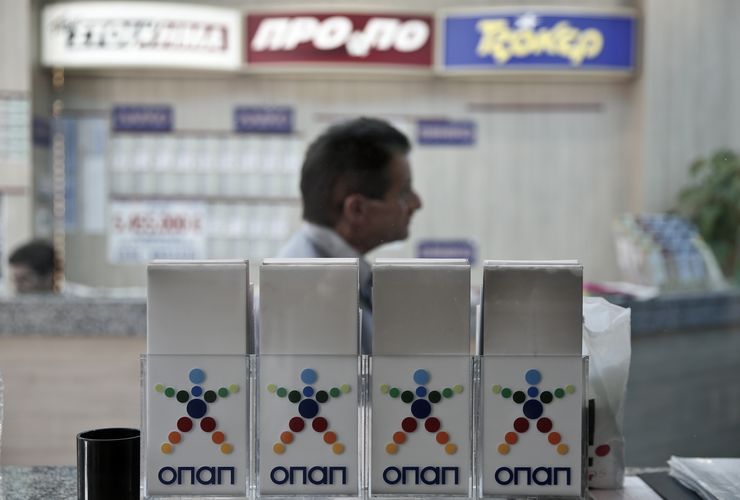Volumes in the European high-yield bond market have doubled in the past five years and this year will be a record too thanks to a declining loan market.
To see the digital version of this report, please click here.
To purchase printed copies or a PDF of this report, please email gloria.balbastro@thomsonreuters.com.
By almost every metric possible, 2013 will be a record year for European high-yield bond issuance. At the end of September, issuance stood at €65bn, according to Societe Generale and most analysts agree this figure should easily top €75bn before the end of the year. This represents a comfortable doubling in the size of the market since the collapse of Lehman Brothers in 2008.
Drill down more deeply into those figures and they become even more impressive. First and foremost, it is becoming clear that the European high-yield bond market is letting go of the US market’s apron strings and becoming a force in its own right. This change has been widely welcomed.
“The demand is there. Until now, the supply of high-yield paper for both banks and investors has been relatively weak,” said Paul Bail, head of debt advisory at Baird.
There is no doubt that the US high-yield bond market is larger and more mature. Put into perspective, last year it stood at €165bn equivalent, but the gap is shrinking. “The US high-yield market is still more than three times larger than the euro market, but in 2006 and 2007 it was more than five times larger,” said Tanneguy de Carne, head of high-yield at Societe Generale.
The European high-yield bond market is also starting to stand on its own two feet. Of the €65bn debt raised by European companies, only 17% has been raised in dollars. In every way this is an improvement. Last year, for example, the market raised €57.8bn, of which 36% was in the US dollar market.
Most significant of all is that the number of inaugural issuers has grown dramatically. Of the 152 high-yield deals until the end of September, 65 are inaugural issuers. Last year it was only 29 issuers out of 112 deals. No wonder de Carne calls it a “step change”.
It might be expected that the spectre of rising interest rates in both Europe and the US might be behind the current wave of high-yield issuance, with issuers keen to lock in debt at low rates, but this is not nearly as much a factor as might be expected.
“Indications from the Fed and the ECB are that they are not going to hike rates any time soon. And generally there is an 18-month lag when interest rates rise before you see the effects in the bond market,” said one DCM banker.
“European corporate borrowers are much more comfortable that accessing the high-yield market will not hurt their business’ perception or, more importantly, the lending appetite of their relationship banks”
Far more significant are two other complementary factors which have had an impact on European issuance: constraints in the bank loan market and a shift in the perception of high-yield debt. Regulatory hurdles, in particular stringent risk-retention requirements on banks has meant an unwillingness for banks to lend to corporates in the way that they used to. These corporates, perhaps inevitably the ones lower down the ratings scale, are turning, naturally enough to the bond market instead.
As significant a driver is the shift in the perception of what high-yield means. “High-yield has become much less of a negative term in Europe,” said Frank Garibaldi, head of high-yield capital markets in Europe at RBC Capital Markets. “European corporate borrowers are much more comfortable that accessing the high-yield market will not hurt their business’ perception or, more importantly, the lending appetite of their relationship banks.”
Peripherals return
What gives heart that recent issuance is more than a flash in the pan is the return of peripheral names to market. Not only are deals being printed, spreads have begun to come in. Issues that, a year ago might have had a coupon 300bp wide of comparable deals, are now issuing either flat or with only a small premium.
“We are well past the mentality that prevailed until the middle of last year and continued to some extent into the beginning of this year, of investors categorically avoiding anything peripheral”, said Tom Egan, director, high-yield capital markets at Barclays. “The economic outlook in these countries is improving – albeit slowly – and we are seeing more deals getting done for issuers in these countries, and those deals are performing well.”
Even in May, Spanish automotive supplier Gestamp was able to sell an inaugural €770m-equivalent seven non-call three senior secured issue with both euro and US tranches comfortably inside 6%. More recently, in mid-September, Spanish renewable energy and engineering company Abengoa sold a €250m tap of its 8.875% February 2018s. It priced at 100.25, the cheap end of the 100.25–100.75 guidance range.
A more significant development than Spanish or Portuguese names returning to the capital markets can be seen in the number of Greek issuers. Greek gaming company Intralot printed a €325m five-year deal at the beginning of August at 9.75% to yield 10%, pricing the bond at the tight end of guidance and upsizing the bond on the back of demand. Even more impressively, the company got the deal away despite having postponed the deal just six weeks earlier after extreme volatility derailed its first attempt to print.
Earlier in May, Greek-domiciled Frigoglass priced its debut €250m five non-call two senior unsecured issued at par to yield 8.25%, the tight end of 8.25%–8.5% guidance, a fact made even more impressive in light of the firm’s heavy exposures to West Africa.
“The market is now willing to accept these stories again. It will grow, not just continue. De facto there is a much larger pool of targets,” said SG’s de Carne.
The market’s appetite for Greek credits now even stretches to the most exotic end of the credit spectrum. At the end of September, Emma Delta sold a €400m four-year bond, the €150m second lien of which priced of 98.20 to yield a whopping 12.577%. That was the highest cash yield in the European high-yield market so far this year.
Emma Delta is a fund buying a stake in the Greek lottery OPAP, one of the country’s first successful privatisations. The sky-high margin, however, has less to do with Greece and more to do with the bond employing one of the riskiest structures employed in any jurisdiction this year. As the fund is acquiring a minority stake in the company, it could not raise debt against OPAP with a company guarantee. Instead it had to employ a risky margin loan structure, in which the shares themselves are the collateral.
If the margin debt element was not risky enough, Emma Delta could not ensure that a high enough dividend to service debt was paid out unless they gained majority control of OPAP’s board, and the bond contained a massive 102 put option if this did not happen in the first 75 days. Emma Delta now has control of the board, and according to sources close to the deal this was always a fait accompli, but some investors were put off by the lack of clarity around how the fund would pay the high put cost if for some reason the board transition ran less smoothly.
How to evolve next?
A curiosity of the European high-yield market is that it is rare to see tenors of more than seven-years, with many issuers favouring a short five-year tenor. Traditionally this has been because of the way it reflects the dynamics of the loan market, but it is driven by both by investors and sponsors too.
As Barclays’ Egan said: “CFOs, treasurers and FDs are focused on the headline coupon. A 10-year deal that comes at 7% is often regarded less favourably than a five-year deal that prints at 6%; very few issuers seem to be thinking about the rate environment.” And sponsors like the five-year tenor too either because they have the private equity mentality of wanting to sell or, if they are optimists, they expect the credit to have been upgraded in the meantime. On top of those are companies that simply dislike the bond market and reckon that five years is a good time to wait before the loan market returns.
The question that bankers are asking, is how the European high-yield market can evolve next. Some US high-yield names are starting to look at Europe more seriously. At the beginning of October, for example, Medical Properties Trust became the first US REIT to tap the euro high-yield market. It sold a €200m seven non-call three senior issue at par to yield 5.75%. But it is important to emphasise this was not an arbitrage play; rather it was to raise money for European business.
Hopes of the European market developing further because of the arbitrage benefits between it and the US are unlikely to be seen any time soon. In the investment-grade market there is a significant discount when issuing in the European debt markets. According to BofA Merrill the average yield difference between investment-grade bonds issued in euros and those in US dollars at the end of September stood at 122bp – the biggest difference since 2008.
“There will be a lot more issuance before the year end – we are going to be open for business until December 17 or 18”
That dynamic is not so extreme in the high-yield market – the Merrill Lynch High Yield index puts the differential at around 50bp – though it is still there. European issuers tapping the dollar market have historically priced more tightly than in euros, but the dynamic is already starting to change. The French distributor of electrical supplies Rexel sold US$500m 2020s at 5.25% while it sold €500m 2020s comfortably inside that at 5.125%. The European high-yield on aggregate also carries tighter spreads than the US, as the market has fewer credits at the very bottom of the ratings spectrum. “The US high-yield market has always been deeper, but the European market has always been tighter”, said one banker.
But while there is an arbitrage opportunity in IG names, it does not exist in the high-yield market. What arbitrage advantage there is, is wiped out by CDS. “The swap lines are too expensive; the provider of the swap lines charges a lot more,” said SG’s de Carne.
The fact that the question is being asked at all shows how much more seriously the market is being looked at. While other debt markets might have had teething problems or other difficulties throughout the year, the European high-yield market has continued to print. It is a sign of the enthusiasm surrounding the market that when asked for his predictions for year-end volumes one banker said: “There will be a lot more issuance before the year end – we are going to be open for business until December 17 or 18.”

